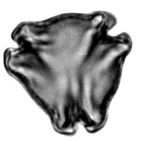Pollen analyses for pollination research, unacetolyzed pollen
DOI:
https://doi.org/10.26786/1920-7603(2012)15Abstract
Pollinators feed on the pollen, nectar, and other plant exudates that are associated with flowers. As a result of this feeding activity, pollen becomes attached to them. Analysis of this pollen can reveal what they eat, their dispersal patterns in and around cropping systems, and their role in pollination. However, finding pollen on and or in a pollinator depends on the technique used to recover pollen. Two very easy techniques are described in detail that have been used to recover pollen from a variety of pollinators including beneficial and harmful insects, spiders, bats, and other pollinators. These techniques can be used to recover pollen from internal tissues (gut, alimentary canal, crop, etc.), external tissues (proboscis, legs, eyes, etc.), or both. By using the proper technique, better pollen recovery can be made and thus better data can be obtained about the pollinators, the foods they eat, the plants they pollinate, their migration routes and source zones.

Downloads
Published
How to Cite
Issue
Section
License
Copyright (c) 2012 Gretchen D. Jones

This work is licensed under a Creative Commons Attribution 4.0 International License.
JPE is an open access journal which means that all content is freely available without charge to the user or his/her institution.
Authors who publish with this journal agree to the following terms:
1) Authors retain copyright and grant the journal right of first publication with the work simultaneously licensed under a Creative Commons Attribution License that allows others to share the work with an acknowledgement of the work's authorship and initial publication in this journal.
2) Authors are able to enter into separate, additional contractual arrangements for the non-exclusive distribution of the journal's published version of the work (e.g., post it to an institutional repository or publish it in a book), with an acknowledgement of its initial publication in this journal.
3) Authors are permitted and encouraged to post their work online (e.g., in institutional repositories or on their website) prior to and during the submission process, as it can lead to productive exchanges, as well as earlier and greater citation of published work (See The Effect of Open Access).
To assure a broader targeted audience, content will be included into databases (such as EBSCO) and directories (such as DOAJ).











